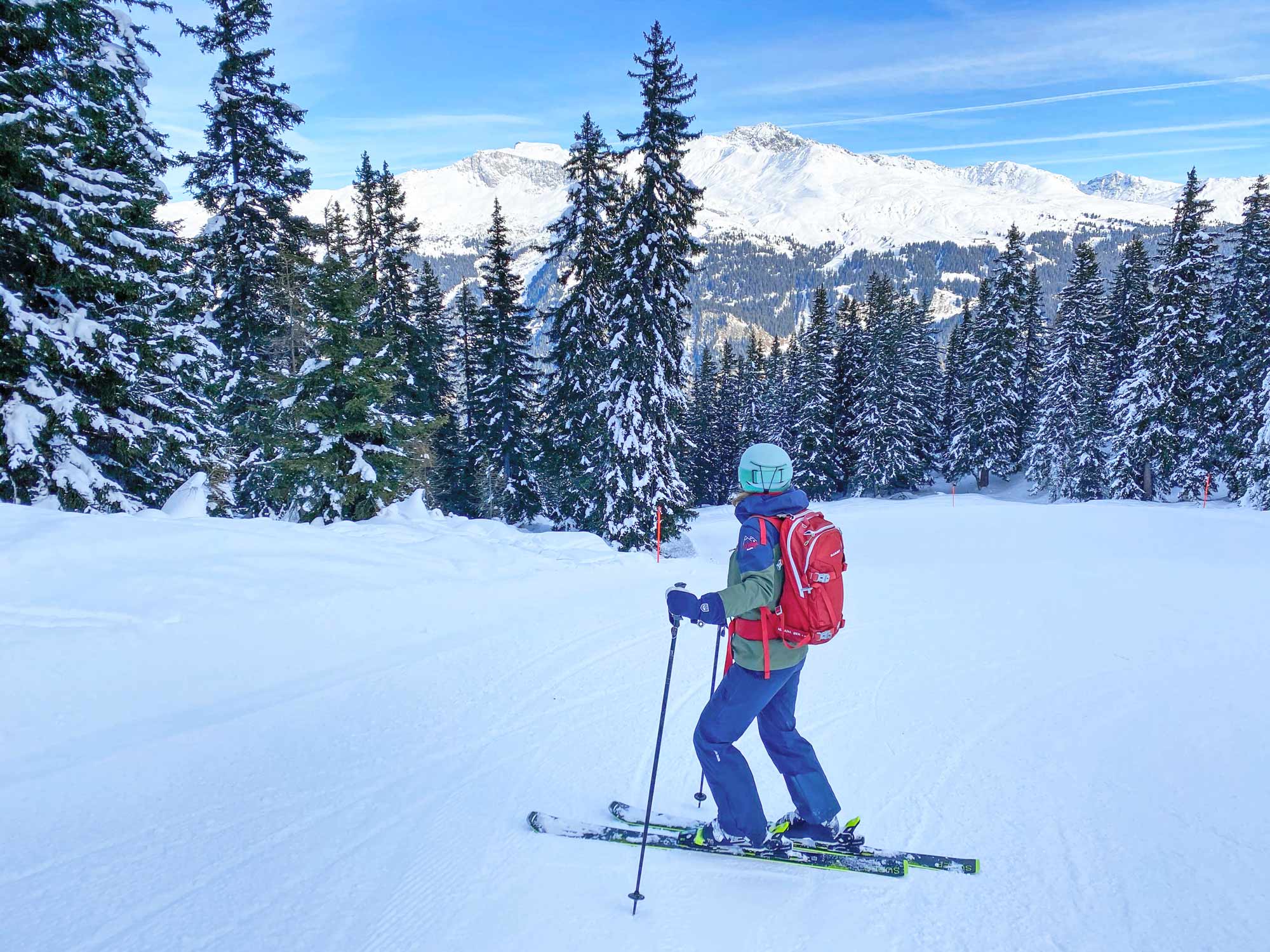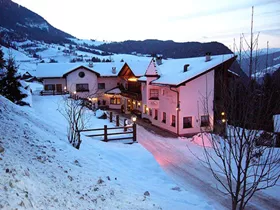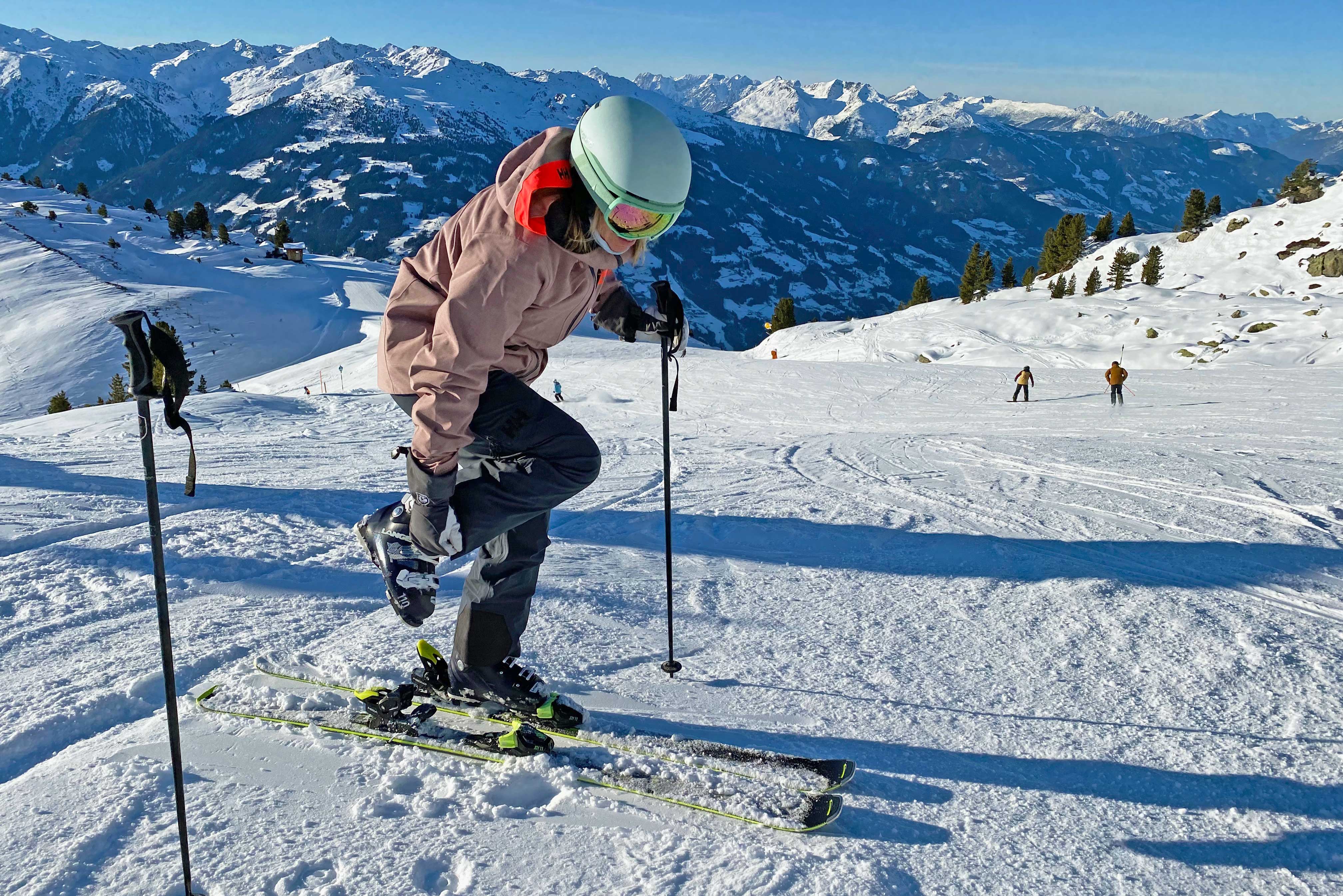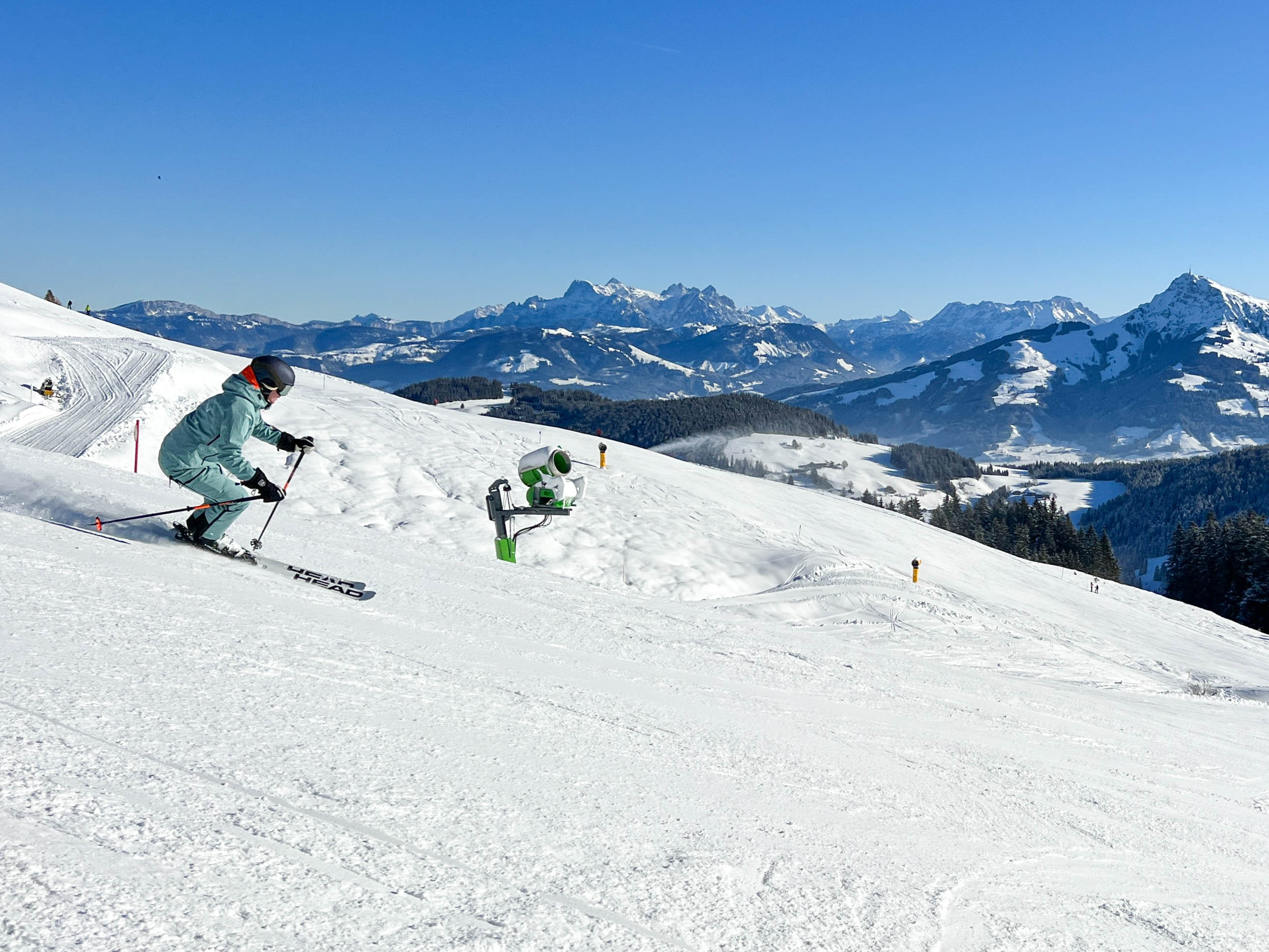
In skiing, carving refers to using the edges of your skis to “carve” a smooth path through the snow, without skidding or braking at every turn. It’s the natural progression after you master the basics of the snowplough and easy turns, and now that we have shaped carving skis with a generous sidecut, it’s much easier to perfect your carving technique. Check out videos of the pros and you’ll see them carving so well through the snow, they make it look super easy! If you pay attention to these tips, that kind of effortless carving is within your grasp as well. Here are some tips for learning how to carve like a pro!
1. Perfect your stance
To carve properly, you need to adopt a stance where your hips, knees and ankles are slightly bent, with your legs about shoulder width apart. Your arms should be slightly spread and you should be holding your poles out in front of your body in a relaxed position.
2. Let your skis do the work
A good skier only needs one element in order to carve well: speed. As long as you’re travelling fast enough over the snow, centrifugal force and instinctive body movements will take over. As you learned in ski lessons, you initiate the turn by placing pressure on the inside edge of your outer ski using your knees and ankles, forcing your centre of gravity into the curve. Try not to twist or rotate your upper body.
3. Practise shifting your centre of balance
Practice makes perfect! Those tiny tots you see doing the airplane during their ski lessons have the right idea. By pointing your inner arm towards the sky and touching your outer hand all the way down to your ski boot, you’ll force your weight onto the outer ski where it should be. This is a great way to get the feel of how to shift your centre of balance during a turn.
4. Learn how to weight and unweight your skis
Thanks to today’s modern ski design, you’ll find that centrifugal force literally pushes you into the curve. To compensate for the tilting motion and avoid falling sideways, you’ll have to nudge your hips gently towards the slope, at the same time pushing your hips slightly back. Try to imitate the position of a motorcyclist leaning into a turn.
5. Avoid these common carving mistakes
If you place too much weight on the inner ski, it will push you down the slope and you’ll have a hard time keeping your balance. Try practising by lifting your inner ski entirely off the ground to get the hang of weighting and unweighting. As you improve your carving technique, practise completing your turns completely instead of skidding down the slope after each turn. If you get tired, you can alternate a few complete turns with a few skidding recovery turns.
Great piste for carving on the Kaunertal Glacier
Carving is best practised on wide, evenly sloped pistes that aren’t too steep, like you’ll find on many blue runs. Here are some of our favourite slopes for practising carving:
- Sölden-Hochsölden-Vent: Exit 38 on the Tiefenbach Glacier
- Zermatt: Departure from Furggsattel towards the Trockener Steg
- Ski Zillertal 3000: Exit 9 on the Hintertux Glacier
- Arosa Lenzerheide: Exit 1 from Hörnli to Arosa
- Ischgl - Samnaun - Silvretta Arena: Exit 11 from the Idjoch in the direction of Idalp
TIP: Want to perfect your carving technique but not sure where you’re going wrong? Get a friend to take videos or rapid-action pictures of you while skiing so you can easily pinpoint what you need to improve.
In skiing, carving refers to using the edges of your skis to “carve” a smooth path through the snow, without skidding or braking at every turn. It’s the natural progression after you master the basics of the snowplough and easy turns, and now that we have shaped carving skis with a generous sidecut, it’s much easier to perfect your carving technique. Check out videos of the pros and you’ll see them carving so well through the snow, they make it look super easy! If you pay attention to these tips, that kind of effortless carving is within your grasp as well. Here are some tips for learning how to carve like a pro!
1. Perfect your stance
To carve properly, you need to adopt a stance where your hips, knees and ankles are slightly bent, with your legs about shoulder width apart. Your arms should be slightly spread and you should be holding your poles out in front of your body in a relaxed position.
2. Let your skis do the work
A good skier only needs one element in order to carve well: speed. As long as you’re travelling fast enough over the snow, centrifugal force and instinctive body movements will take over. As you learned in ski lessons, you initiate the turn by placing pressure on the inside edge of your outer ski using your knees and ankles, forcing your centre of gravity into the curve. Try not to twist or rotate your upper body.
3. Practise shifting your centre of balance
Practice makes perfect! Those tiny tots you see doing the airplane during their ski lessons have the right idea. By pointing your inner arm towards the sky and touching your outer hand all the way down to your ski boot, you’ll force your weight onto the outer ski where it should be. This is a great way to get the feel of how to shift your centre of balance during a turn.
4. Learn how to weight and unweight your skis
Thanks to today’s modern ski design, you’ll find that centrifugal force literally pushes you into the curve. To compensate for the tilting motion and avoid falling sideways, you’ll have to nudge your hips gently towards the slope, at the same time pushing your hips slightly back. Try to imitate the position of a motorcyclist leaning into a turn.
5. Avoid these common carving mistakes
If you place too much weight on the inner ski, it will push you down the slope and you’ll have a hard time keeping your balance. Try practising by lifting your inner ski entirely off the ground to get the hang of weighting and unweighting. As you improve your carving technique, practise completing your turns completely instead of skidding down the slope after each turn. If you get tired, you can alternate a few complete turns with a few skidding recovery turns.
Great piste for carving on the Kaunertal Glacier
Carving is best practised on wide, evenly sloped pistes that aren’t too steep, like you’ll find on many blue runs. Here are some of our favourite slopes for practising carving:
- Sölden-Hochsölden-Vent: Exit 38 on the Tiefenbach Glacier
- Zermatt: Departure from Furggsattel towards the Trockener Steg
- Ski Zillertal 3000: Exit 9 on the Hintertux Glacier
- Arosa Lenzerheide: Exit 1 from Hörnli to Arosa
- Ischgl - Samnaun - Silvretta Arena: Exit 11 from the Idjoch in the direction of Idalp
TIP: Want to perfect your carving technique but not sure where you’re going wrong? Get a friend to take videos or rapid-action pictures of you while skiing so you can easily pinpoint what you need to improve.














